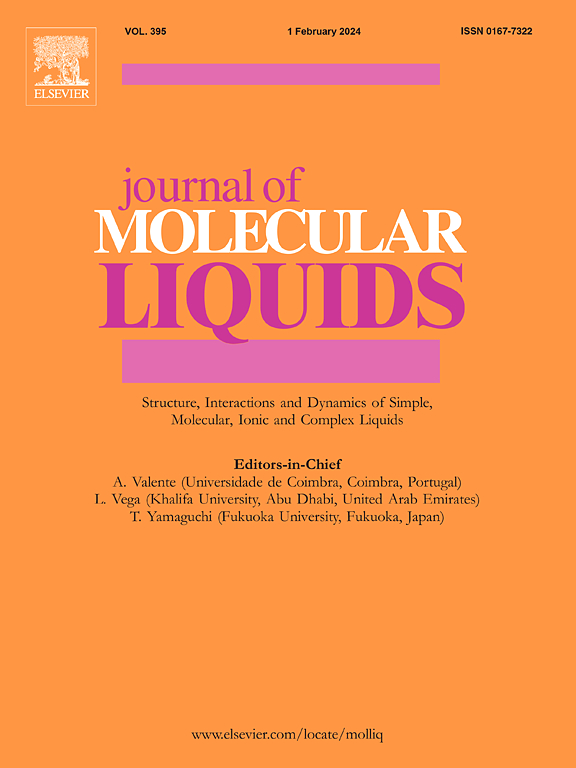Choline-based amino acid ionic liquids for CO2 capture
IF 5.3
2区 化学
Q2 CHEMISTRY, PHYSICAL
引用次数: 0
Abstract
Choline-amino acid based ionic liquids ([Cho][AA]) have emerged as a significant class of biocompatible ionic liquids with promising applications in CO2 capture. This research investigates the interactions and structural properties of four specific systems: [Cho][Gly], [Cho][Ala], [Cho][Ser], and [Cho][Pro], utilizing density functional theory (DFT) and molecular dynamics (MD) simulations. Quantum mechanical studies suggest two distinct mechanisms for chemisorption, revealing a trend in energy values that decreases with the increasing size of the amino acid side chain: [Cho][Gly] < [Cho][Ala] < [Cho][Ser] < [Cho][Pro]. Calculations combined with noncovalent interactions studies unveil the mechanisms that favor the ammonium-carbamate with respect to the carbamic acid one, correlating with experimental insights. The MD simulations elucidate the cation–anion interactions, with radial distribution function (RDF) analysis indicating significant variations across different ionic liquid environments. Strong interactions are noted in [Cho][Ala] and [Cho][Gly], whereas [Cho][Pro] exhibits the weakest interactions. Additionally, the introduction of dimethyl sulfoxide (DMSO) effectively reduce the density during CO2 absorption processes, thereby enhancing fluid dynamics and promoting more efficient CO2 capture. These findings highlight the potential applications of these ILs in solvent extraction and carbon capture technologies. This study establishes a foundation for future research to optimize choline-based ILs for practical applications in environmental and industrial contexts, emphasizing their role as promising agents for CO2 separation.

求助全文
约1分钟内获得全文
求助全文
来源期刊

Journal of Molecular Liquids
化学-物理:原子、分子和化学物理
CiteScore
10.30
自引率
16.70%
发文量
2597
审稿时长
78 days
期刊介绍:
The journal includes papers in the following areas:
– Simple organic liquids and mixtures
– Ionic liquids
– Surfactant solutions (including micelles and vesicles) and liquid interfaces
– Colloidal solutions and nanoparticles
– Thermotropic and lyotropic liquid crystals
– Ferrofluids
– Water, aqueous solutions and other hydrogen-bonded liquids
– Lubricants, polymer solutions and melts
– Molten metals and salts
– Phase transitions and critical phenomena in liquids and confined fluids
– Self assembly in complex liquids.– Biomolecules in solution
The emphasis is on the molecular (or microscopic) understanding of particular liquids or liquid systems, especially concerning structure, dynamics and intermolecular forces. The experimental techniques used may include:
– Conventional spectroscopy (mid-IR and far-IR, Raman, NMR, etc.)
– Non-linear optics and time resolved spectroscopy (psec, fsec, asec, ISRS, etc.)
– Light scattering (Rayleigh, Brillouin, PCS, etc.)
– Dielectric relaxation
– X-ray and neutron scattering and diffraction.
Experimental studies, computer simulations (MD or MC) and analytical theory will be considered for publication; papers just reporting experimental results that do not contribute to the understanding of the fundamentals of molecular and ionic liquids will not be accepted. Only papers of a non-routine nature and advancing the field will be considered for publication.
 求助内容:
求助内容: 应助结果提醒方式:
应助结果提醒方式:


